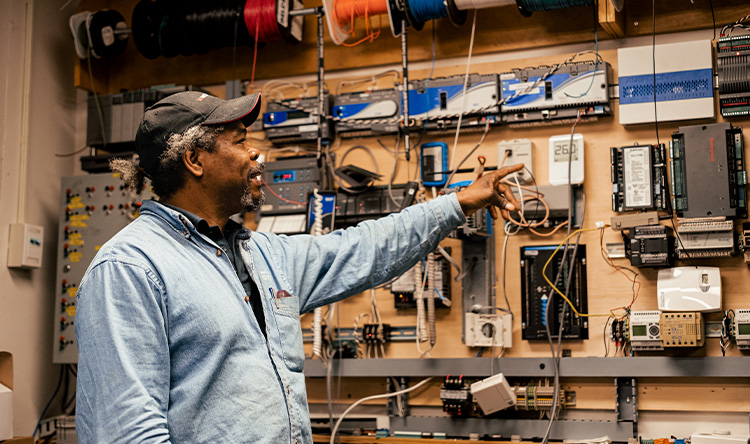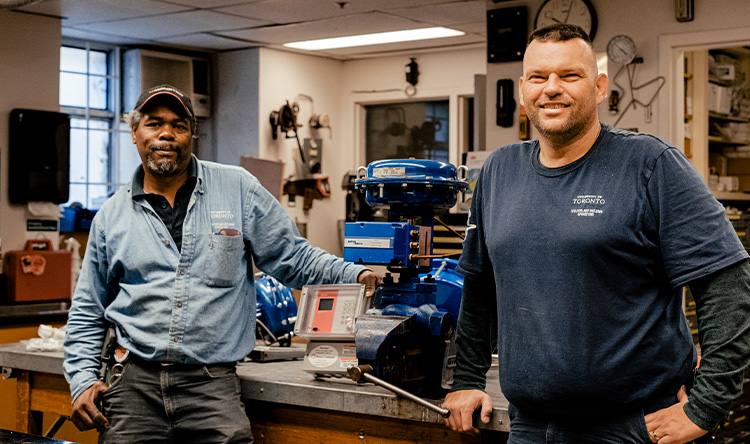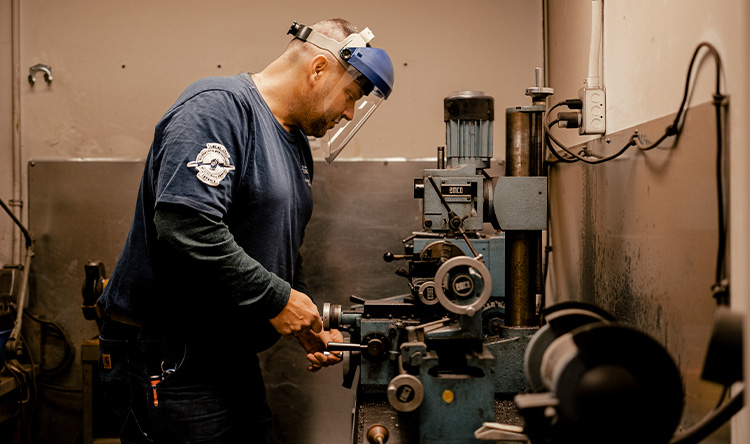Automation and control: 100 years of ensuring the campus operates smoothly
For over 100 years, the automation and control team has been looking after the campus’ control systems, life safety devices, the Central Steam Plant, energy meters, and laboratory controls.
As a world-class research facility and university, over 6,000 controls across campus require the team’s care to maintain the right environment for research, learning, and operations.


Automation and control is a branch of engineering that controls and monitors the functioning of processes without direct human involvement. The tight-knit, seven-member team’s primary focus is to maintain the comfort controls on campus that regulate temperature, airflow, and water conditions for both typical and non-typical spaces and applications. The team also contributes to the University’s sustainability goals by supporting energy meter installation.
“Every day is different,” says Sean Collins, shop supervisor. “Each job presents a unique problem and requires a unique solution.”
There are no routine calls at the automation and control shop. Technicians can expect a different challenge every shift, requiring a certain amount of adaptability.
At the start of each day, Sean assigns tasks to different technicians based on their specialty and areas of expertise. Each technician specializes in different manufacturing systems (the main three being Honeywell, Johnson, and Siemens), and different functions such as metering, pneumatic controls, refrigeration alarms, and airflow control.


The technicians then head to the specific building and collaborate with building operations to accurately resolve issues.
Since they cover the entire St. George campus, the team does a lot of travelling to buildings to attend to service calls. However, they always return to the workshop where they can conduct other responsibilities, such as repairing parts and testing.
Situated one floor below ground level at Banting Institute is the automation and control shop. The shop space is compact and well-equipped, and is separated into three main areas, including an extensive storage room for parts and the main workplace with wooden tables and heavy parts.
At times, finding parts externally can be time-consuming and difficult, especially locating older or obsolete parts.
The technicians overcome these challenges by reconditioning control valves themselves. If a valve is not correctly integrating with other parts, they have the expertise to take it apart and perform the necessary milling to ensure it operates as required.


To effectively correct system malfunctions, the shop also contains a test version of every existing controller on campus to test making precise adjustments.
In addition to expertise, the team also boasts extensive experience on campus.
“All of our technicians have been at U of T for a long time,” says Collins. “I’ve been in the shop for 33 years, and others, like Gus (Kostantinos Stefanidis, control technician) have been here for at least 15 years.”
The technicians’ knowledge of the campus allows the shop to provide an unparalleled level of service.
“My main goal is to make it happen every day,” says Collins. “If people are able to accomplish what they need to on campus without thinking about the existence of automation and control systems, then we’re doing a good job.”
